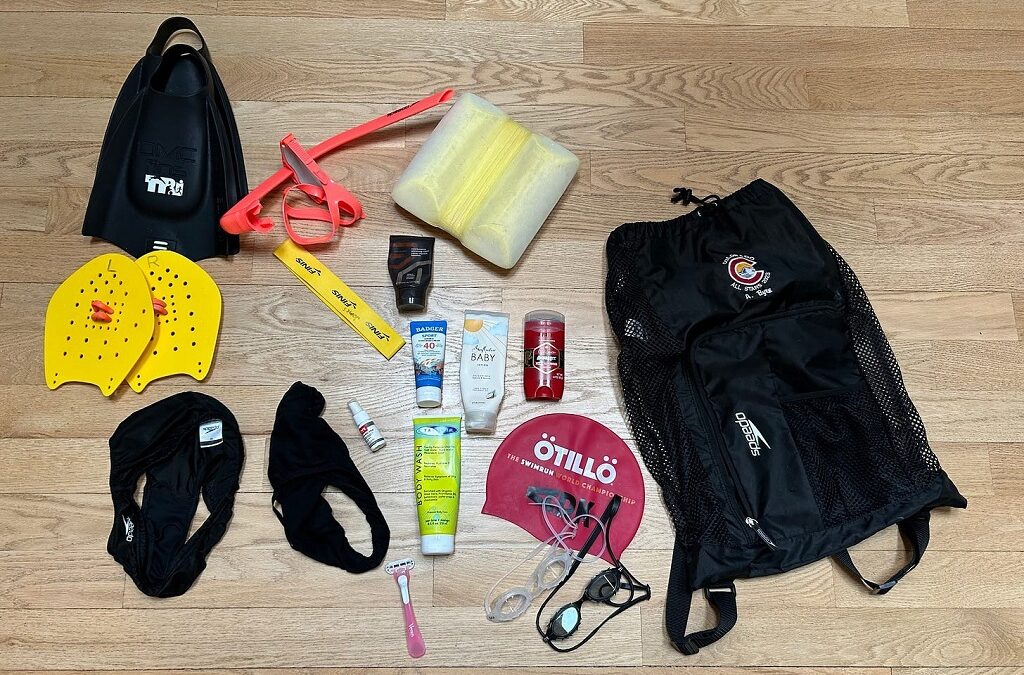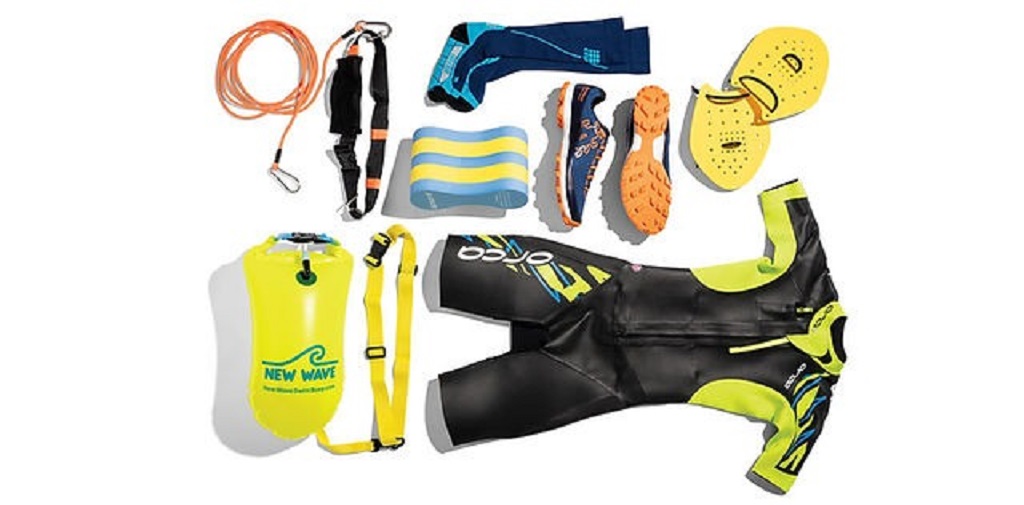Essential Gear You Need for Swimruns: A Complete Checklist

STK Steakhouse Miami Beach: Reservations, Menu & Reviews
August 19, 2025
Hike with a Heart: Why Sustainable Outdoor Gear for Women Matters
August 21, 2025Swimrun racing combines swimming and running in a unique endurance challenge that demands specialized equipment. This exciting sport originated in Sweden and has gained popularity worldwide through events like those organized by Swimrun The Riviera. Participants alternate between swimming in open water and running on trails, often covering distances that test both physical and mental endurance Essential Gear for Swimruns.
The key to a successful swimrun lies in proper preparation and having the right equipment. Unlike traditional triathlons, swimrunners wear the same gear throughout the entire race. Therefore, choosing versatile equipment becomes crucial for performance and comfort.
Understanding what gear do i need for swimruns can make the difference between an enjoyable experience and a challenging ordeal. Additionally, the right equipment ensures safety during both swimming and running segments. However, beginners often feel overwhelmed by the variety of available gear options.
Table of Contents
ToggleEssential Swimming Equipment
The Essential Gear for Swimruns portions of swimruns require specific gear that differs from pool swimming equipment. Wetsuit selection represents the most important decision for any swimrunner. Choose a wetsuit designed specifically for open water swimming with good flexibility around the shoulders and arms.
Neoprene thickness varies depending on water temperature and personal preference. Most swimrunners prefer 3-4mm thickness for moderate water temperatures. Additionally, some athletes choose sleeveless wetsuits for better arm mobility during longer swimming segments.
Goggles must provide clear vision and comfortable fit for extended periods. Anti-fog coating becomes essential during longer races. Furthermore, consider tinted lenses for bright conditions or clear lenses for cloudy weather and early morning starts.
Pull buoys help maintain proper body position during swimming while reducing leg fatigue. These foam devices fit between your thighs and allow you to focus energy on arm strokes. However, some races restrict or prohibit pull buoy usage, so check event regulations beforehand.
Hand paddles can improve Essential Gear for Swimruns efficiency and reduce arm fatigue over long distances. Choose smaller paddles for comfort during extended use. Therefore, practice with your chosen paddles during training to ensure proper technique and comfort.
Running Gear Essentials
Running equipment for swimruns differs significantly from traditional road running gear. Shoes must drain water quickly while providing adequate traction on various surfaces. Trail running shoes with drainage holes work best for most conditions.
Consider shoes with aggressive tread patterns for rocky or muddy terrain. Additionally, quick-lacing systems save valuable time during transitions between swimming and running segments. However, ensure the lacing system won’t come loose during swimming portions.
Compression garments help with muscle support and temperature regulation throughout the race. Choose moisture-wicking materials that dry quickly after swimming segments. Furthermore, seamless construction prevents chafing during long events.
Running shorts or tights should be comfortable when wet and dry quickly. Avoid cotton materials that retain water and cause discomfort. Therefore, synthetic materials or merino wool blends work best for Essential Gear for Swimruns events.
Transition and Navigation Equipment
Efficient transitions between swimming and running require specific organizational gear. Elastic bands or bungee cords help secure running shoes to your body during swimming segments. This system prevents losing shoes and speeds up transitions.
Waterproof bags protect essential items like nutrition, electronics, and spare gear. Choose bags with reliable sealing systems and consider bright colors for visibility. Additionally, practice packing and accessing items from these bags during training sessions.
GPS watches designed for multisport activities help track progress and navigation during races. Choose models with long battery life and clear displays. However, practice using all features during training to avoid confusion on race day.
Compasses provide backup navigation when electronic devices fail. Waterproof models ensure functionality in all conditions. Furthermore, learn basic compass navigation skills to use this equipment effectively.
Safety Equipment Mandatory Gear
Safety equipment often becomes mandatory for swimrun events, especially in challenging conditions. Whistles provide emergency signaling capability during both swimming and running segments. Choose models that work when wet and attach securely to your person.
Emergency shelter or space blankets help prevent hypothermia in case of emergency stops. These lightweight items take minimal space but provide crucial protection. Additionally, reflective surfaces help with visibility and signaling.
First aid supplies should include basic wound care items and any personal medications. Waterproof packaging ensures supplies remain usable throughout the event. Therefore, customize your first aid kit based on personal needs and race requirements.
Emergency communication devices like satellite messengers provide rescue capability in remote areas. Some races require or recommend these devices for safety. However, check event regulations and test devices before race day.
Additional Performance Accessories
Nutrition and hydration equipment ensures proper fueling throughout long events. Hydration belts or backpacks work well for carrying fluids during running segments. Choose systems that don’t interfere with swimming movements.
Energy gels, bars, and electrolyte supplements help maintain energy levels during extended efforts. Practice nutrition timing and product selection during training. Additionally, consider how packaging will be affected by water exposure.
Anti-chafing products prevent skin irritation during long events with wet and dry conditions. Apply products to all potential friction points before the race starts. Furthermore, reapplication may be necessary during very long events.
Sunscreen becomes essential for events in sunny conditions, especially during swimming in open water. Choose waterproof formulations that won’t wash off easily. Therefore, apply generously and consider reapplication during longer races.
Gear Preparation and Testing
All swimrun equipment requires thorough testing before race day. Practice with your complete gear setup during training sessions that simulate race conditions. This preparation helps identify potential problems and allows for adjustments.
Create a detailed gear checklist to ensure nothing gets forgotten on race day. Organize equipment the night before and double-check all items. Additionally, prepare backup options for critical gear components.
Maintenance of equipment extends its lifespan and ensures reliable performance. Rinse all gear with fresh water after training and racing. Furthermore, inspect equipment regularly for wear and replace items as needed.
Read More Also: STK Steakhouse Miami Beach
Conclusion
Successful swimrun participation requires careful gear selection and preparation. The unique demands of combining swimming and running create specific equipment needs that differ from other endurance sports. Therefore, investing in quality gear appropriate for your skill level and race conditions pays dividends in performance and enjoyment.
Remember that the best gear combines functionality, comfort, and reliability. Additionally, proper testing and preparation ensure your equipment works as intended when it matters most. However, start with essential items and gradually add specialized gear as your experience grows.
The right equipment enhances safety, comfort, and performance throughout your swimrun journey. Therefore, take time to research, test, and prepare your gear properly for the best possible race experience.
Read More Also: Single Wide vs Double Wide
Frequently Asked Questions
What is the most important piece of gear for swimruns?
A properly fitting wetsuit is the most critical piece of equipment for swimruns. It provides buoyancy, thermal protection, and affects your comfort throughout the entire race. Choose a wetsuit designed for open water swimming with good shoulder flexibility.
Can I use regular running shoes for swimruns?
Regular running shoes retain too much water and lack proper drainage for swimruns. Trail running shoes with drainage holes and quick-drying materials work much better. Additionally, consider shoes with aggressive tread for varied terrain conditions.
Do I need different gear for different race distances?
Longer races typically require more navigation equipment, nutrition supplies, and safety gear. Shorter races may allow for lighter, more minimal gear setups. However, always check specific race requirements regardless of distance.
How much should I expect to spend on swimrun gear?
Basic swimrun gear can cost $300-500, while a complete high-end setup may cost $1000-1500. Start with essential items like wetsuit, shoes, and goggles, then add specialized gear gradually. Additionally, consider used equipment to reduce initial costs.
When should I practice with my complete gear setup?
Practice with your complete gear at least 3-4 times before race day, including one long training session. This preparation helps identify fit issues, chafing problems, and equipment malfunctions. Furthermore, practice transitions between swimming and running with all your gear.





